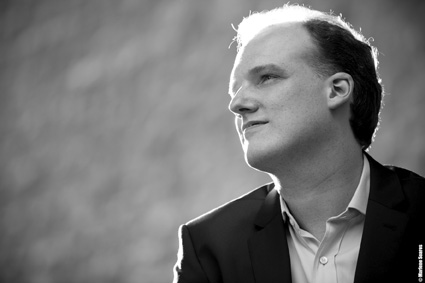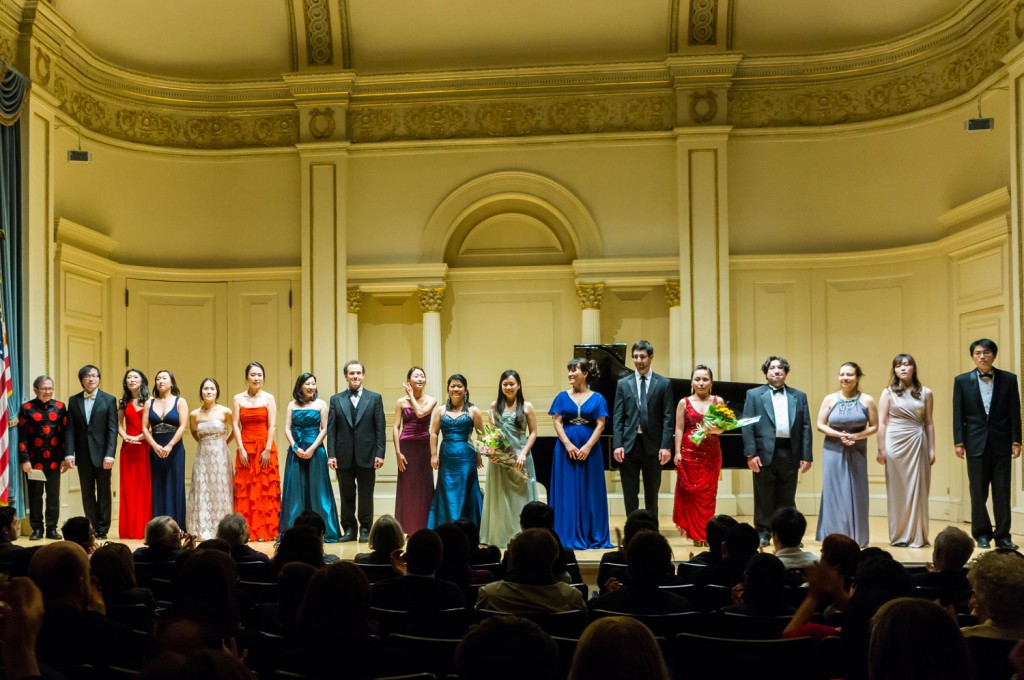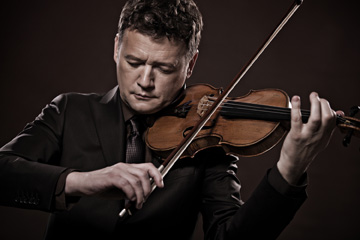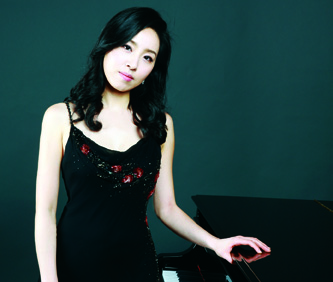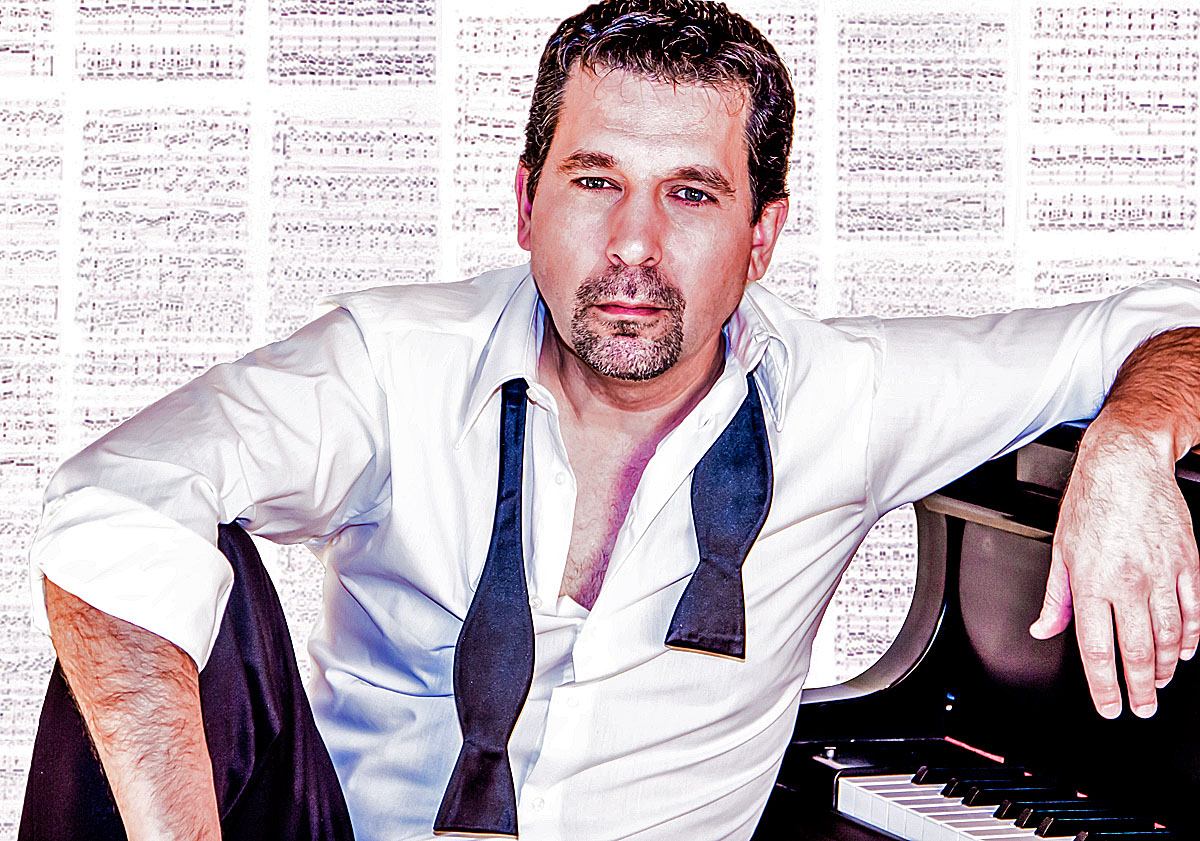
- Sergei Kvitko, pianist
The solo piano debut of Sergei Kvitko at Weill Hall was a heartwarming occasion – even a love-fest – for many reasons that became clear throughout the evening. As a bit of background, the Russian-born resident of Lansing, Michigan is no average pianist. Having come to the U.S. to pursue a Doctor of Musical Arts degree at Michigan State University under the tutelage of Ralph Votapek, he has become a highly successful recording engineer and producer, with accolades for his work from numerous musical reviewers and a loyal following of musicians whom he has helped in their career paths. Beyond this, he is a composer and transcriber, as evidenced by several remarkable contributions on the evening’s program. He gives one hundred percent when he performs, and his energy is inspiring. In addition, he has an engaging personality, full of humor, something that showed in his commentary throughout the evening.
Mr. Kvitko opened with his own original transcription of Bach’s Prelude in C Major (from the Well-Tempered Clavier Book I). The title was listed on the program as “Prelude in C Major with a Few Added Notes.” A few, indeed! Roughly as Charles Gounod had been inspired by this Bach work to add melody above, Mr. Kvitko took things farther, using the Prelude as a bass (entirely played by his left hand) and adding a florid quasi-improvisatory right hand part which built virtuosically to a large climax. I always appreciate new inspirations coming from this beloved piece, and this was a fresh one.
My first reaction to seeing that Kvitko had also programmed his own transcription of Ysaÿe’s Third Sonata for Violin (also known as “Ballade”) was to ask “why?” – because in my opinion the Ysaÿe still could stand a few more decades of hearings as written before it becomes the foundation for a “fresh perspective” transcription. Well, that question was quickly negated by what emerged as a captivating expansion upon the original. Starting off with a note-for-note statement taken from the violin work, Kvitko continued the original but with fleshed-out and reinforced harmonizations, octave doublings, and in general heightened drama via his own elaborations. Rather than obscuring Ysaÿe’s work, the transcription became an elucidation of it. I must confess to understanding the original better than I had before – and how great it was to hear it without any intonation problems! Just as each of the Ysaÿe Sonatas was dedicated to a great violinist (this one originally to Enescu) Mr. Kvitko dedicated this transcription to “the most important violinist” in his life, his mother. It was a special moment.
Another question “why?” might be elicited by the engagement of dancers for the Escenas Románticas by Granados, because those of us spoiled by the suave elegance of, say, Alicia De Larrocha’s renditions of these solo pieces may feel that the music says more than enough without visual distraction; Mr. Kvitko, however, clearly thinks outside such boxes. It also may even be silly to ask “why” when creative spirits such as he simply DO – a quality for which we may usually be thankful!
Kvitko’s interpretation was an expansive one, even if not as nuanced as I’d like. His playing maximized the drama, as the whole ballet concept encouraged it to do. The dancers, Lucas Segovia and Kara Zimmerman of the Joffrey Ballet of Chicago, offered what amounted to a half-ballet and half-pantomime creation of various scenes of love, including the first glance, the rebuff, the seduction, the celebration, and finally the settling of passions into lasting love. Some of the earlier pantomiming (including props of newspaper, chairs, and flowers), while charming, seemed to undermine the intimacy that I treasure in this musical set, but the last movement, the heartfelt and Chopinesque Epilogo, was quite moving. It was also interesting to behold dancers at Weill Hall, something I’ve not experienced before.
The second half opened with the pianist’s own transcription of Trepak from Mussorgsky’s “Songs and Dances of Death” (dedicated to the composer Ricky Ian Gordon, who was present). It was another miniature one would hear nowhere else, to me an asset to any recital. In the story behind the music, the protagonist dies, so the music was that of tragedy – or as Kvitko wryly introduced it, “it’s Russian.” It was well transcribed and performed, and a good introduction to the rest of the program.
The substance of the second half was Mussorgsky’s Pictures at an Exhibition (the pictures being a nice parallel to the “Escenas” aspect of the first half). It is a work that Mr. Kvitko has recorded, to very favorable critical response. This evening’s performance was an “over the top” one, with almost unremitting massive and prolonged fortes, a test to the pianist’s staying power. Even the Ballet of the Unhatched Chicks was larger than life, raising concerns about how the Hut on Hen’s Legs (Baba-Yaga) would top it – but as it turned out, Mr. Kvitko had more than enough stamina to follow the genetically modified chicks with steroidal hens! Where some wonderful piano dynamics did impress was in the end of “Bydlo” where one could imagine cattle carts disappearing into the distance: the fadeout was so well paced in fine gradations that one guessed that such a conception might have been helped by Mr. Kvitko’s experience with the wonders of audio technology. To hear that effect transferred to a perfect extended diminuendo on the piano was a treat. One can be confident that Mr. Kvitko has more of such treats in store, in whatever pursuits he undertakes, whether in producing, composing, or performing.
The end of the Great Gate of Kiev was met with rousing applause, bravos, and a standing ovation. Encores included another ballet performance (to a Piazzollaesque piano work) and a lightning-fast Doctor Gradus ad Parnassum by Debussy.
Piano Transcription of Solo Violin Sonata No. 3 “Ballade”
Pianist Sergei Kvitko with Lucas Segovia & Kara Zimmerman of Joffrey Ballet of Chicago perform last movement of Enrique Granados’ Escenas Románticas – Epílogo.
Filmed live at Cook Recital Hall of College of Music, Michigan State University.



